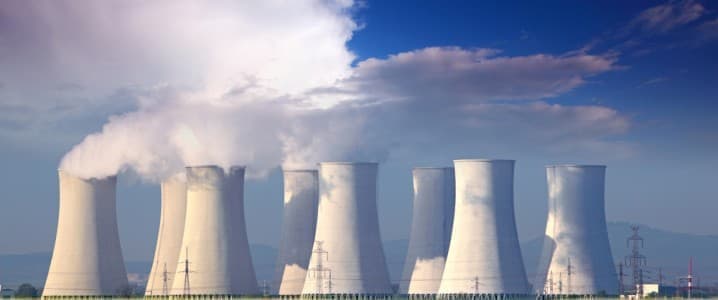United States President Donald Trump is putting his money where his mouth is as he doubles down on efforts to accelerate the expansion of the country’s nuclear energy sector. The government will spend billions in public funding to reinvigorate U.S. nuclear power, following decades of underinvestment. Unlike renewable energy, Trump views nuclear power as key to expanding the U.S. electricity generation capacity and recently announced the target of quadrupling nuclear capacity by 2050.
In May, President Trump signed an executive order calling for the U.S. to develop 10 new large nuclear reactors by the end of the decade. In addition, several tech companies, including Alphabet, Amazon, Meta Platforms, and Microsoft, are providing billions in private funding to restart old nuclear plants, upgrade existing ones, and deploy new reactor technology to meet the growing demands from the data centres powering advanced technologies, such as artificial intelligence.
The U.S. Department of Energy’s (DoE) loan office will dedicate significant funds to the nuclear energy industry to support the development of new reactors. This week, the Energy Secretary Chris Wright stated, “We have significant lending authority at the loan programme office… By far the biggest use of those dollars will be for nuclear power plants — to get those first plants built.”
Wright expects the public support for the sector to encourage private actors to invest more heavily in nuclear power in the coming years. “When we leave office three years and three months from now, I want to see hopefully dozens of nuclear plants under construction,” said Wright.
In October, Trump came to an agreement with the owners of Westinghouse – uranium miner Cameco and Brookfield Asset Management – to invest $80 billion to build nuclear plants across the country. Westinghouse plans to construct large nuclear plants to be fitted with its modern AP1000 reactor design, which can power over 750,000 homes, according to the company. Cameco COO Grant Isaac suggested he would look to the DoE’s loans office to fund the development of the Westinghouse reactors.
However, critics are not so certain that Westinghouse will be able to deliver on its promises due to the company’s poor track record. The firm went bankrupt in 2017 after going over budget on large-scale nuclear projects in Georgia and South Carolina. Westinghouse will have to prove its ability to build the AP1000 on time and on budget to attract the investment it requires.
The Trump administration has developed various international partnerships to help develop its nuclear power sector in recent months. In September, Japan committed to investing in the Westinghouse nuclear project. The Asian country also agreed on an investment deal for Hitachi GE Vernova to build small modular reactors (SMRs).
Also in September, the U.S. signed a multibillion-dollar deal with the United Kingdom to expand nuclear power across both countries. The new Atlantic Partnership for Advanced Nuclear Energy is aimed at accelerating the construction of new reactors and providing reliable, low-carbon energy for high-demand sectors, such as data centres.
The question now is, just how long will it take to achieve the U.S. nuclear renaissance? It typically takes a decade or longer to develop a new nuclear power plant, and while adding additional reactors to existing plants can be faster, licensing and approval can take several years. In addition, after decades of stagnation in the sector, developing nuclear reactors in the U.S. can be extremely costly and slow, due to the lack of expertise, compared to rapidly growing nuclear powers, such as China.
In China, developing a new nuclear reactor now takes between five and six years on average, much faster than the decade-long timeline in most Western countries. This is supported by China’s strong regulatory system and tried-and-tested development methods. Meanwhile, in the U.S., just powering up a disused reactor, such as that of Three Mile Island, can take several years to achieve. The projects being funded by tech companies, which focus on the development of SMRs, are not expected to produce power until the next decade, and these are much smaller than conventional reactors.
The Trump administration hopes to speed up the development process through a range of measures. One executive order calls for the nuclear power industry’s safety regulator to approve applications in no more than 18 months. The recent funding announcement from the DoE’s loan office is expected to help overcome the biggest bottleneck – funding. Congress has also kept its tax breaks in place for nuclear development to attract private funding to the sector.
Thanks to greater political support and public financing, the U.S. nuclear energy sector could rapidly expand its power capacity over the coming decades. However, achieving the level of acceleration in nuclear development expected by the Trump administration is highly unlikely due to a range of challenges hindering development, from expertise to cost and manufacturing capacity. So, while a nuclear renaissance is possible, it is unlikely to be seen within the next decade.
By Felicity Bradstock for Oilprice.com
More Top Reads From Oilprice.com
Oilprice Intelligence brings you the signals before they become front-page news. This is the same expert analysis read by veteran traders and political advisors. Get it free, twice a week, and you’ll always know why the market is moving before everyone else.
You get the geopolitical intelligence, the hidden inventory data, and the market whispers that move billions – and we’ll send you $389 in premium energy intelligence, on us, just for subscribing. Join 400,000+ readers today. Get access immediately by clicking here.



Leave a Comment
Your email address will not be published. Required fields are marked *